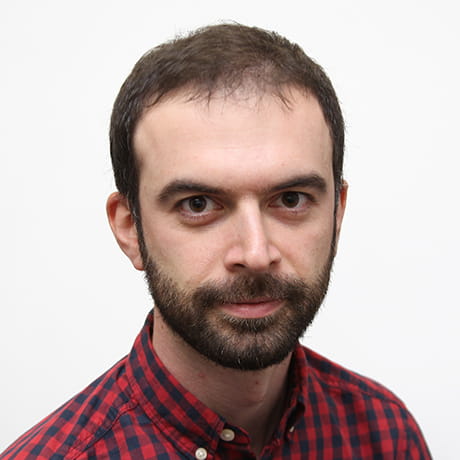
CATALYST postdoc sees future for using big data to solve real-world health care problems
By Tyler Griesenbrock
CATALYST scientific editor
Published July 17, 2019

Dr. Di Tosto, a postdoctoral researcher with CATALYST – the Center for the Advancement of Team Science, Analytics, and Systems Thinking in Health Services and Implementation Science Research – came to The Ohio State University after receiving a PhD in psychology from the University of Padova in Italy.
“I got here because I was looking for more opportunities in the big data science and data analytics space,” he said. “I liked the fact that health care research is an area that is ripe for innovation.”
With CATALYST, Dr. Di Tosto has had the opportunity to work as part of several health care analytics projects. Currently, his work explores ways to use analytics and data science to improve the delivery of health care.
Information technology plays a major role in patients’ engagement with their own care, Dr. Di Tosto noted, adding that he is interested in studying how patients use the technologies at their disposal today, which is key to supporting the adoption and development of more useful technology tools.
That is one of the goals of the High Tech-High Touch project, or HT2, which is funded by the Agency for Healthcare Research and Quality and led by Ann Scheck McAlearney, ScD, MS, the Executive Director of CATALYST. HT2 is examining inpatient portal usage through a randomized controlled trial at The Ohio State University Wexner Medical Center and has designed training strategies for patients and health care providers to support the portal’s integration into medical care.
As part of the HT2 study team, Dr. Di Tosto has focused his research on outpatient portals, investigating whether technology use extends beyond the context of hospital encounters. He presented that project at the AMIA 2019 Clinical Informatics Conference, which attracted health informatics and health information technology experts both from across the country and around the world.
“Technology in health care, like in all aspects of life, offers an opportunity to quantify behavior that before was out of reach for study,” he said. “Once the data are available, they can be put to use both to answer research questions and solve real-world problems faced within a hospital.”
Dr. Di Tosto also recently presented his work with Naleef Fareed, PhD, MBA, an assistant professor in the Department of Biomedical Informatics at Ohio State and a core faculty member with CATALYST. That presentation took place at the Data Science forum at Epic Systems, the software company behind the MyChart Bedside inpatient portal in place at the Ohio State Wexner Medical Center.
“Processing data mined from a web-based health portal allows us to ask new questions and to move from descriptive to predictive analytics,” he said. “It was great to hear from other developers and researchers interested in the kinds of questions we are asking at CATALYST.”
Transitioning from the descriptive to the predictive is the next step in Dr. Di Tosto’s work at CATALYST.
“This is a growing area of research, as we saw, for example, in the forum at Epic,” he said. “Using data to inform decision making helps your research meet the needs of a complex organization like a hospital, and that’s part of what makes this work exciting.”
“You get all this data. You can quantify behavior. Can these measurements be useful to make decisions? To make predictions? To understand better how to staff your ED?” he asked. “Given the type of skills that I have, and given the type of work that I was looking for, CATALYST represents a good opportunity to put everything together and produce an impact.”
For more information about CATALYST, visit go.osu.edu/catalyst. For details about opportunities as a post-doctoral researcher or in another position with CATALYST, visit the Ohio State Wexner Medical Center’s careers page.
